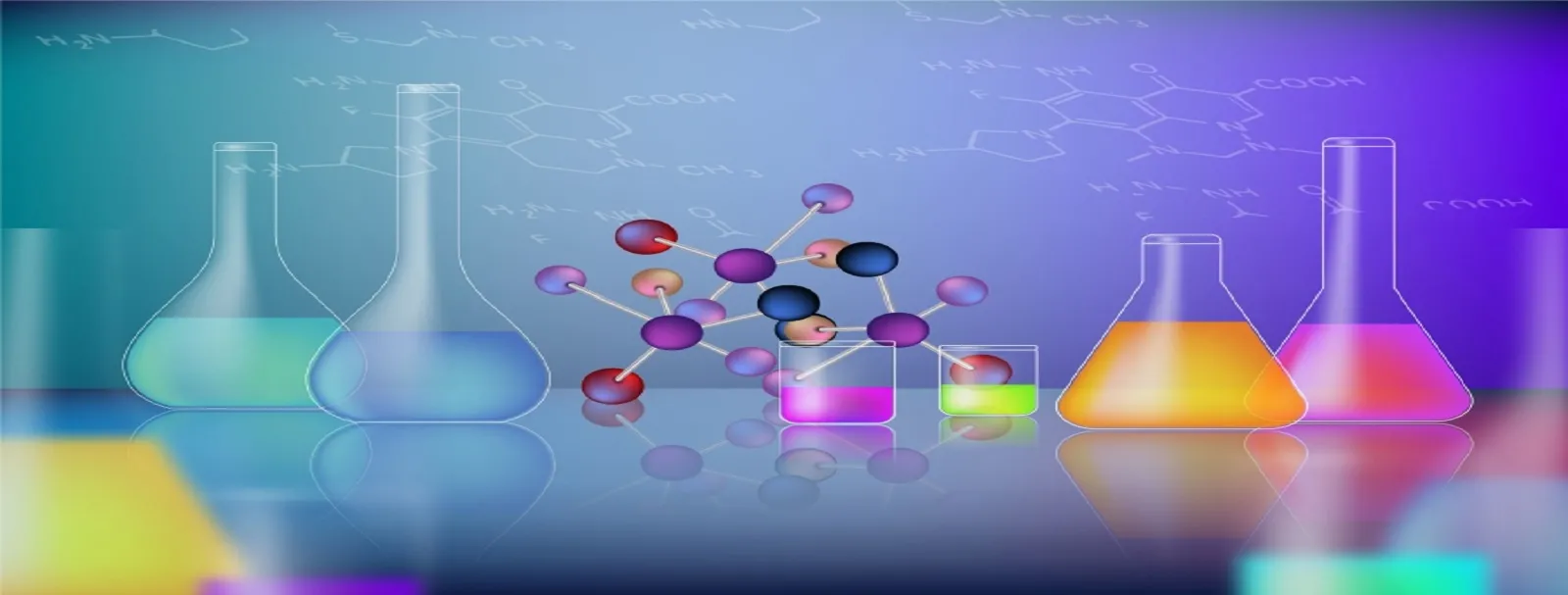Market Outlook
The global Rubber Accelerator TP Market size was valued at USD 237.7 million in 2022 and is forecast to a readjusted size of USD 299.3 million by 2029 with a CAGR of 3.3% during review period.
Introduction: Why the Rubber Accelerator TP Market Matters in 2025
The Rubber Accelerator TP Market in 2025 is critical to high-performance rubber manufacturing. As a specialty chemical, Accelerator TP enhances the vulcanization speed and final strength of rubber used in tires, belts, and seals.
Market Drivers: What's Fueling the Demand?
Rising Automotive and Industrial Rubber Demand: TP accelerators improve throughput and durability.
Need for Fast Curing Agents: Essential for complex, multi-stage vulcanization processes.
Performance Tires and Seals: Accelerator TP helps achieve tight specifications in high-demand applications.
Innovation in Focus: How Manufacturers Are Leading
Low-Nitrosamine Formulations: Address health and safety concerns in the rubber processing industry.
Blends with Other Accelerators: Customized systems for optimal curing and mechanical performance.
Regional Breakdown: Where Demand Is Shifting
Asia-Pacific: Leading producer and consumer due to automotive and industrial rubber production.
North America & Europe: Demand driven by high-performance automotive and aerospace rubber goods.
Strategic Considerations: How to Compete in 2025
Focus on Regulatory Compliance
Ensure compatibility with REACH and OSHA standards to meet global demand.Offer Technical Support to Manufacturers
Collaborate on curing profiles and compound optimization.
Conclusion: The Rubber Accelerator TP Market - Speeding Up Quality and Efficiency
In 2025, rubber accelerators like TP are essential to durable, high-performance rubber goods. Suppliers who provide both innovation and compliance will remain vital to the rubber industry.
Key Market Players
- Vanderbilt Chemicals
- NOCIL
- Henan Longji Chemical
- Yasho Industries
- Willing New Materials
- Hebi UHOO New Materials
Segmentation By Type
- Solid
- Liquid
Segmentation By Application
- Natural Rubber
- Styrene-Butadiene Rubber
- Chloroprene Rubber
- Others
Segmentation By Region
- North America (United States, Canada and Mexico)
- Europe (Germany, France, United Kingdom, Russia, Italy, and Rest of Europe)
- Asia-Pacific (China, Japan, Korea, India, Southeast Asia, and Australia)
- South America (Brazil, Argentina, Colombia, and Rest of South America)
- Middle East & Africa (Saudi Arabia, UAE, Egypt, South Africa, and Rest of Middle East & Africa)
Market SWOT Analysis
What are the strengths of the Rubber Accelerator TP Market in 2025?
The Rubber Accelerator TP (thiuram) market is driven by its essential role in the production of rubber products, particularly in the automotive and industrial sectors. Its high efficiency in accelerating vulcanization and improving the physical properties of rubber makes it indispensable in manufacturing tires, seals, and gaskets.
What are the weaknesses of the Rubber Accelerator TP Market in 2025?
The main weakness of the Rubber Accelerator TP market is its potential environmental impact. Thiuram accelerators are associated with toxicity, which raises concerns regarding worker safety and environmental contamination. Furthermore, increasing regulatory pressure on chemicals in rubber manufacturing could restrict its use.
What are the opportunities for the Rubber Accelerator TP Market in 2025?
With the rising demand for high-performance rubber products, particularly in the automotive and construction industries, the Rubber Accelerator TP market presents growth opportunities. Additionally, advancements in greener alternatives and safer formulations of rubber accelerators could appeal to eco-conscious consumers and manufacturers.
What are the threats to the Rubber Accelerator TP Market in 2025?
The key threats include stricter environmental regulations governing the use of hazardous chemicals, which could impact the production and use of Rubber Accelerator TP. Furthermore, competition from alternative accelerators or more eco-friendly compounds could reduce demand for traditional thiuram-based accelerators.
Market PESTEL Analysis
How do political factors impact the Rubber Accelerator TP Market in 2025?
Government regulations on the manufacturing and use of rubber chemicals, including accelerators, will affect the demand for rubber accelerator TP. Political factors such as trade agreements, environmental policies on chemical safety, and regulations on industrial chemicals in the automotive and manufacturing sectors will also shape the market landscape.
What economic factors affect the Rubber Accelerator TP Market in 2025?
The demand for rubber products in industries like automotive, consumer goods, and construction will drive the need for rubber accelerator TP. Economic fluctuations in these key industries, as well as changes in raw material costs (such as chemicals used in rubber processing), will influence the pricing and production of rubber accelerators.
How do social factors shape the Rubber Accelerator TP Market in 2025?
The increasing demand for durable, high-performance rubber in industries such as automotive and industrial manufacturing, driven by consumer expectations for quality and longevity, will boost the demand for rubber accelerator TP. Social trends focusing on environmental impact and the push for greener manufacturing processes may influence the formulation of these chemicals.
What technological factors are relevant to the Rubber Accelerator TP Market in 2025?
Technological advancements in rubber processing techniques, such as more efficient vulcanization methods and the development of low-emission accelerators, will impact the demand for rubber accelerator TP. New innovations in rubber recycling and sustainability-focused formulations will also shape market dynamics.
What environmental factors influence the Rubber Accelerator TP Market in 2025?
Environmental regulations targeting the reduction of harmful emissions and chemical waste from rubber production will drive the adoption of more eco-friendly rubber accelerators. The shift towards sustainable, recyclable rubber products will influence the formulation and usage of rubber accelerator TP.
How do legal factors impact the Rubber Accelerator TP Market in 2025?
Legal regulations concerning the safety, environmental impact, and toxicity of rubber chemicals will directly affect the rubber accelerator TP market. Compliance with local and international chemical standards, as well as intellectual property rights related to new chemical formulations, will shape market competition.
Market SIPOC Analysis
Who are the suppliers in the Rubber Accelerator TP Market in 2025?
Suppliers include chemical manufacturers, rubber compound suppliers, and specialty chemicals companies producing accelerators for rubber vulcanization.
What are the inputs in the Rubber Accelerator TP Market in 2025?
Inputs include chemicals such as thiuram, dithiocarbamate compounds, and other accelerators, along with raw materials like rubber and vulcanizing agents.
What processes are involved in the Rubber Accelerator TP Market in 2025?
Processes include the mixing of rubber compounds with accelerators, vulcanization of rubber products under heat and pressure, and testing for quality control and product performance.
Who are the customers in the Rubber Accelerator TP Market in 2025?
Customers include tire manufacturers, automotive suppliers, and industrial rubber product makers requiring accelerated vulcanization for improved performance.
What are the outcomes in the Rubber Accelerator TP Market in 2025?
Outcomes include enhanced rubber product performance, reduced production time in rubber manufacturing, and increased demand for efficient and high-performance rubber accelerators.
Market Porter's Five Forces
What is the threat of new entrants in the Rubber Accelerator TP Market in 2025?
The threat of new entrants is moderate. While the production of rubber accelerators requires specialized chemicals and manufacturing techniques, the increasing demand for high-performance rubber products offers opportunities for new players to enter the market.
What is the bargaining power of suppliers in the Rubber Accelerator TP Market in 2025?
The bargaining power of suppliers is moderate. The raw materials for rubber accelerators, such as thiurams and mercaptobenzothiazole, are somewhat commoditized, but the need for high-quality, effective ingredients gives key suppliers some leverage.
What is the bargaining power of buyers in the Rubber Accelerator TP Market in 2025?
The bargaining power of buyers is moderate. While manufacturers can source rubber accelerators from multiple suppliers, they prioritize quality and performance in the production of rubber goods, which allows suppliers with superior products to maintain a strong position.
What is the threat of substitute products in the Rubber Accelerator TP Market in 2025?
The threat of substitutes is low. Rubber accelerators are specialized chemicals used to optimize the curing process in rubber manufacturing, and while some alternative methods exist, they are not as effective or cost-efficient, limiting the substitute threat.
What is the intensity of competitive rivalry in the Rubber Accelerator TP Market in 2025?
The intensity of competitive rivalry is moderate. The market is characterized by a few established players, and competition is primarily focused on offering high-performance accelerators at competitive prices, with innovation playing a key role.
Market Upstream Analysis
What are the key raw materials in the Rubber Accelerator TP Market in 2025?
The key raw materials in the Rubber Accelerator TP market include sulfur, zinc oxide, and various organic compounds such as thiuram and dithiocarbamate derivatives. These are used in the manufacturing of rubber accelerators to promote vulcanization.
What role do suppliers play in the Rubber Accelerator TP Market in 2025?
Suppliers provide the raw chemicals and specialized rubber additives needed to produce rubber accelerators. They also contribute to technical development for improving the efficiency of the vulcanization process and ensuring the final product meets performance specifications.
How does the regulatory environment affect upstream factors in this market?
Regulations related to chemical safety and the environmental impact of the production process, such as restrictions on harmful substances, affect the choice of raw materials. Additionally, regulations on rubber product safety, particularly in automotive and medical industries, influence the demand for specific accelerator types.
What technological advancements influence upstream production in the Rubber Accelerator TP Market in 2025?
Technological advancements in green chemistry, such as the development of more eco-friendly accelerators with fewer harmful by-products, are influencing the market. Also, innovations in polymer processing technology are allowing more efficient use of accelerators in rubber production.
What challenges do upstream suppliers face in this market?
Suppliers face challenges in controlling the quality and consistency of accelerators, maintaining sustainable sourcing practices, and adhering to increasing environmental regulations. Rising prices for key raw materials like sulfur and zinc oxide also pose challenges to the cost structure of the market.
Market Midstream Analysis
What are the key processes involved in the midstream of the Rubber Accelerator TP Market in 2025?
The key processes involve the synthesis of chemical accelerators used in the vulcanization of rubber. Rubber accelerators, such as thiurams and dithiocarbamates, are produced through chemical reactions involving sulfur and various organic compounds. These accelerators enhance the speed and efficiency of rubber curing, improving the material’s performance.
How do manufacturers contribute to the Rubber Accelerator TP Market in 2025?
Manufacturers focus on optimizing production processes to ensure a consistent supply of rubber accelerators with controlled chemical properties. They invest in improving the environmental sustainability of production by reducing waste and enhancing the efficiency of the accelerators in the vulcanization process.
What is the role of packaging in the midstream of this market?
Packaging plays an important role in maintaining the stability and quality of rubber accelerators, as they are often sensitive to moisture and environmental conditions. Rubber accelerators are typically packaged in moisture-resistant bags or containers to ensure their effectiveness and prevent contamination during storage and transportation.
What challenges do companies face in the midstream of this market?
Companies face challenges such as ensuring the safe handling and storage of hazardous chemicals, managing fluctuating raw material prices, and meeting environmental regulations. Additionally, they need to address the increasing demand for sustainable and non-toxic alternatives to traditional rubber accelerators.
How do distribution channels affect the Rubber Accelerator TP Market in 2025?
Distribution channels include specialized chemical suppliers, industrial distributors, and direct sales to rubber manufacturers. Efficient logistics are essential to ensure the timely delivery of rubber accelerators, especially considering their role in the time-sensitive vulcanization process during tire and industrial rubber product manufacturing.
Market Downstream Analysis
What are the key consumer segments in the Rubber Accelerator TP Market in 2025?
Key consumer segments include tire manufacturers, automotive suppliers, and industries producing rubber goods, such as conveyor belts, gaskets, and hoses, all of which rely on rubber accelerators to enhance the curing process and improve rubber product performance.
How do retailers and online platforms contribute to the Rubber Accelerator TP Market in 2025?
Retailers and online platforms play a significant role in the distribution of rubber accelerators by providing easy access to industrial buyers who require specific types of accelerators for various rubber manufacturing processes, facilitating global trade and supply chains.
What role does consumer education play in the downstream market for Rubber Accelerator TP in 2025?
Education helps consumers, particularly in the rubber industry, understand the benefits of using rubber accelerators to improve product quality, curing speed, and efficiency. It also informs about the proper handling, usage, and potential safety concerns related to the chemicals.
What challenges do companies face in the downstream market of this industry?
Challenges include managing fluctuations in the cost of raw materials, addressing regulatory concerns regarding chemical safety and environmental impact, and responding to competition from alternative curing agents or new formulations in the rubber industry.
How does consumer feedback influence the Rubber Accelerator TP Market in 2025?
Consumer feedback encourages the development of more efficient, safer, and environmentally friendly accelerators. Manufacturers are likely to focus on producing accelerators that offer faster curing times and improved performance while reducing toxic emissions and waste.
Chapter 1, to describe Rubber Accelerator TP product scope, market overview, market estimation caveats and base year.
Chapter 2, to profile the top manufacturers of Rubber Accelerator TP, with price, sales, revenue and global market share of Rubber Accelerator TP from 2018 to 2023.
Chapter 3, the Rubber Accelerator TP competitive situation, sales quantity, revenue and global market share of top manufacturers are analyzed emphatically by landscape contrast.
Chapter 4, the Rubber Accelerator TP breakdown data are shown at the regional level, to show the sales quantity, consumption value and growth by regions, from 2018 to 2029.
Chapter 5 and 6, to segment the sales by Type and application, with sales market share and growth rate by type, application, from 2018 to 2029.
Chapter 7, 8, 9, 10 and 11, to break the sales data at the country level, with sales quantity, consumption value and market share for key countries in the world, from 2017 to 2022.and Rubber Accelerator TP market forecast, by regions, type and application, with sales and revenue, from 2024 to 2029.
Chapter 12, market dynamics, drivers, restraints, trends and Porters Five Forces analysis.
Chapter 13, the key raw materials and key suppliers, and industry chain of Rubber Accelerator TP.
Chapter 14 and 15, to describe Rubber Accelerator TP sales channel, distributors, customers, research findings and conclusion.
1 Market Overview
1.1 Product Overview and Scope of p-Hydroxycinnamic Acid
1.2 Market Estimation Caveats and Base Year
1.3 Market Analysis by Process
1.3.1 Overview: Global p-Hydroxycinnamic Acid Consumption Value by Process: 2018 Versus 2022 Versus 2029
1.3.2 Fermentation Method
1.3.3 Chemical Synthesis Method
1.4 Market Analysis by Application
1.4.1 Overview: Global p-Hydroxycinnamic Acid Consumption Value by Application: 2018 Versus 2022 Versus 2029
1.4.2 Electronics
1.4.3 Pharmaceutical Intermediate
1.4.4 Food
1.4.5 Other
1.5 Global p-Hydroxycinnamic Acid Market Size & Forecast
1.5.1 Global p-Hydroxycinnamic Acid Consumption Value (2018 & 2022 & 2029)
1.5.2 Global p-Hydroxycinnamic Acid Sales Quantity (2018-2029)
1.5.3 Global p-Hydroxycinnamic Acid Average Price (2018-2029)
2 Manufacturers Profiles
2.1 Shandong Yangcheng Biotechnology
2.1.1 Shandong Yangcheng Biotechnology Details
2.1.2 Shandong Yangcheng Biotechnology Major Business
2.1.3 Shandong Yangcheng Biotechnology p-Hydroxycinnamic Acid Product and Services
2.1.4 Shandong Yangcheng Biotechnology p-Hydroxycinnamic Acid Sales Quantity, Average Price, Revenue, Gross Margin and Market Share (2018-2023)
2.1.5 Shandong Yangcheng Biotechnology Recent Developments/Updates
2.2 Blue California
2.2.1 Blue California Details
2.2.2 Blue California Major Business
2.2.3 Blue California p-Hydroxycinnamic Acid Product and Services
2.2.4 Blue California p-Hydroxycinnamic Acid Sales Quantity, Average Price, Revenue, Gross Margin and Market Share (2018-2023)
2.2.5 Blue California Recent Developments/Updates
2.3 Zaoyang Cixiang Medical Technology
2.3.1 Zaoyang Cixiang Medical Technology Details
2.3.2 Zaoyang Cixiang Medical Technology Major Business
2.3.3 Zaoyang Cixiang Medical Technology p-Hydroxycinnamic Acid Product and Services
2.3.4 Zaoyang Cixiang Medical Technology p-Hydroxycinnamic Acid Sales Quantity, Average Price, Revenue, Gross Margin and Market Share (2018-2023)
2.3.5 Zaoyang Cixiang Medical Technology Recent Developments/Updates
2.4 Shanxi Jinjin Chemical
2.4.1 Shanxi Jinjin Chemical Details
2.4.2 Shanxi Jinjin Chemical Major Business
2.4.3 Shanxi Jinjin Chemical p-Hydroxycinnamic Acid Product and Services
2.4.4 Shanxi Jinjin Chemical p-Hydroxycinnamic Acid Sales Quantity, Average Price, Revenue, Gross Margin and Market Share (2018-2023)
2.4.5 Shanxi Jinjin Chemical Recent Developments/Updates
2.5 Wuhan LANDMARK Industrial
2.5.1 Wuhan LANDMARK Industrial Details
2.5.2 Wuhan LANDMARK Industrial Major Business
2.5.3 Wuhan LANDMARK Industrial p-Hydroxycinnamic Acid Product and Services
2.5.4 Wuhan LANDMARK Industrial p-Hydroxycinnamic Acid Sales Quantity, Average Price, Revenue, Gross Margin and Market Share (2018-2023)
2.5.5 Wuhan LANDMARK Industrial Recent Developments/Updates
3 Competitive Environment: p-Hydroxycinnamic Acid by Manufacturer
3.1 Global p-Hydroxycinnamic Acid Sales Quantity by Manufacturer (2018-2023)
3.2 Global p-Hydroxycinnamic Acid Revenue by Manufacturer (2018-2023)
3.3 Global p-Hydroxycinnamic Acid Average Price by Manufacturer (2018-2023)
3.4 Market Share Analysis (2022)
3.4.1 Producer Shipments of p-Hydroxycinnamic Acid by Manufacturer Revenue ($MM) and Market Share (%): 2022
3.4.2 Top 3 p-Hydroxycinnamic Acid Manufacturer Market Share in 2022
3.4.2 Top 6 p-Hydroxycinnamic Acid Manufacturer Market Share in 2022
3.5 p-Hydroxycinnamic Acid Market: Overall Company Footprint Analysis
3.5.1 p-Hydroxycinnamic Acid Market: Region Footprint
3.5.2 p-Hydroxycinnamic Acid Market: Company Product Type Footprint
3.5.3 p-Hydroxycinnamic Acid Market: Company Product Application Footprint
3.6 New Market Entrants and Barriers to Market Entry
3.7 Mergers, Acquisition, Agreements, and Collaborations
4 Consumption Analysis by Region
4.1 Global p-Hydroxycinnamic Acid Market Size by Region
4.1.1 Global p-Hydroxycinnamic Acid Sales Quantity by Region (2018-2029)
4.1.2 Global p-Hydroxycinnamic Acid Consumption Value by Region (2018-2029)
4.1.3 Global p-Hydroxycinnamic Acid Average Price by Region (2018-2029)
4.2 North America p-Hydroxycinnamic Acid Consumption Value (2018-2029)
4.3 Europe p-Hydroxycinnamic Acid Consumption Value (2018-2029)
4.4 Asia-Pacific p-Hydroxycinnamic Acid Consumption Value (2018-2029)
4.5 South America p-Hydroxycinnamic Acid Consumption Value (2018-2029)
4.6 Middle East and Africa p-Hydroxycinnamic Acid Consumption Value (2018-2029)
5 Market Segment by Process
5.1 Global p-Hydroxycinnamic Acid Sales Quantity by Process (2018-2029)
5.2 Global p-Hydroxycinnamic Acid Consumption Value by Process (2018-2029)
5.3 Global p-Hydroxycinnamic Acid Average Price by Process (2018-2029)
6 Market Segment by Application
6.1 Global p-Hydroxycinnamic Acid Sales Quantity by Application (2018-2029)
6.2 Global p-Hydroxycinnamic Acid Consumption Value by Application (2018-2029)
6.3 Global p-Hydroxycinnamic Acid Average Price by Application (2018-2029)
7 North America
7.1 North America p-Hydroxycinnamic Acid Sales Quantity by Process (2018-2029)
7.2 North America p-Hydroxycinnamic Acid Sales Quantity by Application (2018-2029)
7.3 North America p-Hydroxycinnamic Acid Market Size by Country
7.3.1 North America p-Hydroxycinnamic Acid Sales Quantity by Country (2018-2029)
7.3.2 North America p-Hydroxycinnamic Acid Consumption Value by Country (2018-2029)
7.3.3 United States Market Size and Forecast (2018-2029)
7.3.4 Canada Market Size and Forecast (2018-2029)
7.3.5 Mexico Market Size and Forecast (2018-2029)
8 Europe
8.1 Europe p-Hydroxycinnamic Acid Sales Quantity by Process (2018-2029)
8.2 Europe p-Hydroxycinnamic Acid Sales Quantity by Application (2018-2029)
8.3 Europe p-Hydroxycinnamic Acid Market Size by Country
8.3.1 Europe p-Hydroxycinnamic Acid Sales Quantity by Country (2018-2029)
8.3.2 Europe p-Hydroxycinnamic Acid Consumption Value by Country (2018-2029)
8.3.3 Germany Market Size and Forecast (2018-2029)
8.3.4 France Market Size and Forecast (2018-2029)
8.3.5 United Kingdom Market Size and Forecast (2018-2029)
8.3.6 Russia Market Size and Forecast (2018-2029)
8.3.7 Italy Market Size and Forecast (2018-2029)
9 Asia-Pacific
9.1 Asia-Pacific p-Hydroxycinnamic Acid Sales Quantity by Process (2018-2029)
9.2 Asia-Pacific p-Hydroxycinnamic Acid Sales Quantity by Application (2018-2029)
9.3 Asia-Pacific p-Hydroxycinnamic Acid Market Size by Region
9.3.1 Asia-Pacific p-Hydroxycinnamic Acid Sales Quantity by Region (2018-2029)
9.3.2 Asia-Pacific p-Hydroxycinnamic Acid Consumption Value by Region (2018-2029)
9.3.3 China Market Size and Forecast (2018-2029)
9.3.4 Japan Market Size and Forecast (2018-2029)
9.3.5 Korea Market Size and Forecast (2018-2029)
9.3.6 India Market Size and Forecast (2018-2029)
9.3.7 Southeast Asia Market Size and Forecast (2018-2029)
9.3.8 Australia Market Size and Forecast (2018-2029)
10 South America
10.1 South America p-Hydroxycinnamic Acid Sales Quantity by Process (2018-2029)
10.2 South America p-Hydroxycinnamic Acid Sales Quantity by Application (2018-2029)
10.3 South America p-Hydroxycinnamic Acid Market Size by Country
10.3.1 South America p-Hydroxycinnamic Acid Sales Quantity by Country (2018-2029)
10.3.2 South America p-Hydroxycinnamic Acid Consumption Value by Country (2018-2029)
10.3.3 Brazil Market Size and Forecast (2018-2029)
10.3.4 Argentina Market Size and Forecast (2018-2029)
11 Middle East & Africa
11.1 Middle East & Africa p-Hydroxycinnamic Acid Sales Quantity by Process (2018-2029)
11.2 Middle East & Africa p-Hydroxycinnamic Acid Sales Quantity by Application (2018-2029)
11.3 Middle East & Africa p-Hydroxycinnamic Acid Market Size by Country
11.3.1 Middle East & Africa p-Hydroxycinnamic Acid Sales Quantity by Country (2018-2029)
11.3.2 Middle East & Africa p-Hydroxycinnamic Acid Consumption Value by Country (2018-2029)
11.3.3 Turkey Market Size and Forecast (2018-2029)
11.3.4 Egypt Market Size and Forecast (2018-2029)
11.3.5 Saudi Arabia Market Size and Forecast (2018-2029)
11.3.6 South Africa Market Size and Forecast (2018-2029)
12 Market Dynamics
12.1 p-Hydroxycinnamic Acid Market Drivers
12.2 p-Hydroxycinnamic Acid Market Restraints
12.3 p-Hydroxycinnamic Acid Trends Analysis
12.4 Porters Five Forces Analysis
12.4.1 Threat of New Entrants
12.4.2 Bargaining Power of Suppliers
12.4.3 Bargaining Power of Buyers
12.4.4 Threat of Substitutes
12.4.5 Competitive Rivalry
13 Raw Material and Industry Chain
13.1 Raw Material of p-Hydroxycinnamic Acid and Key Manufacturers
13.2 Manufacturing Costs Percentage of p-Hydroxycinnamic Acid
13.3 p-Hydroxycinnamic Acid Production Process
13.4 p-Hydroxycinnamic Acid Industrial Chain
14 Shipments by Distribution Channel
14.1 Sales Channel
14.1.1 Direct to End-User
14.1.2 Distributors
14.2 p-Hydroxycinnamic Acid Typical Distributors
14.3 p-Hydroxycinnamic Acid Typical Customers
15 Research Findings and Conclusion
16 Appendix
16.1 Methodology
16.2 Research Process and Data Source
16.3 Disclaimer
List of Tables
Table 1. Global p-Hydroxycinnamic Acid Consumption Value by Process, (USD Million), 2018 & 2022 & 2029
Table 2. Global p-Hydroxycinnamic Acid Consumption Value by Application, (USD Million), 2018 & 2022 & 2029
Table 3. Shandong Yangcheng Biotechnology Basic Information, Manufacturing Base and Competitors
Table 4. Shandong Yangcheng Biotechnology Major Business
Table 5. Shandong Yangcheng Biotechnology p-Hydroxycinnamic Acid Product and Services
Table 6. Shandong Yangcheng Biotechnology p-Hydroxycinnamic Acid Sales Quantity (Tons), Average Price (US$/Ton), Revenue (USD Million), Gross Margin and Market Share (2018-2023)
Table 7. Shandong Yangcheng Biotechnology Recent Developments/Updates
Table 8. Blue California Basic Information, Manufacturing Base and Competitors
Table 9. Blue California Major Business
Table 10. Blue California p-Hydroxycinnamic Acid Product and Services
Table 11. Blue California p-Hydroxycinnamic Acid Sales Quantity (Tons), Average Price (US$/Ton), Revenue (USD Million), Gross Margin and Market Share (2018-2023)
Table 12. Blue California Recent Developments/Updates
Table 13. Zaoyang Cixiang Medical Technology Basic Information, Manufacturing Base and Competitors
Table 14. Zaoyang Cixiang Medical Technology Major Business
Table 15. Zaoyang Cixiang Medical Technology p-Hydroxycinnamic Acid Product and Services
Table 16. Zaoyang Cixiang Medical Technology p-Hydroxycinnamic Acid Sales Quantity (Tons), Average Price (US$/Ton), Revenue (USD Million), Gross Margin and Market Share (2018-2023)
Table 17. Zaoyang Cixiang Medical Technology Recent Developments/Updates
Table 18. Shanxi Jinjin Chemical Basic Information, Manufacturing Base and Competitors
Table 19. Shanxi Jinjin Chemical Major Business
Table 20. Shanxi Jinjin Chemical p-Hydroxycinnamic Acid Product and Services
Table 21. Shanxi Jinjin Chemical p-Hydroxycinnamic Acid Sales Quantity (Tons), Average Price (US$/Ton), Revenue (USD Million), Gross Margin and Market Share (2018-2023)
Table 22. Shanxi Jinjin Chemical Recent Developments/Updates
Table 23. Wuhan LANDMARK Industrial Basic Information, Manufacturing Base and Competitors
Table 24. Wuhan LANDMARK Industrial Major Business
Table 25. Wuhan LANDMARK Industrial p-Hydroxycinnamic Acid Product and Services
Table 26. Wuhan LANDMARK Industrial p-Hydroxycinnamic Acid Sales Quantity (Tons), Average Price (US$/Ton), Revenue (USD Million), Gross Margin and Market Share (2018-2023)
Table 27. Wuhan LANDMARK Industrial Recent Developments/Updates
Table 28. Global p-Hydroxycinnamic Acid Sales Quantity by Manufacturer (2018-2023) & (Tons)
Table 29. Global p-Hydroxycinnamic Acid Revenue by Manufacturer (2018-2023) & (USD Million)
Table 30. Global p-Hydroxycinnamic Acid Average Price by Manufacturer (2018-2023) & (US$/Ton)
Table 31. Market Position of Manufacturers in p-Hydroxycinnamic Acid, (Tier 1, Tier 2, and Tier 3), Based on Consumption Value in 2022
Table 32. Head Office and p-Hydroxycinnamic Acid Production Site of Key Manufacturer
Table 33. p-Hydroxycinnamic Acid Market: Company Product Type Footprint
Table 34. p-Hydroxycinnamic Acid Market: Company Product Application Footprint
Table 35. p-Hydroxycinnamic Acid New Market Entrants and Barriers to Market Entry
Table 36. p-Hydroxycinnamic Acid Mergers, Acquisition, Agreements, and Collaborations
Table 37. Global p-Hydroxycinnamic Acid Sales Quantity by Region (2018-2023) & (Tons)
Table 38. Global p-Hydroxycinnamic Acid Sales Quantity by Region (2024-2029) & (Tons)
Table 39. Global p-Hydroxycinnamic Acid Consumption Value by Region (2018-2023) & (USD Million)
Table 40. Global p-Hydroxycinnamic Acid Consumption Value by Region (2024-2029) & (USD Million)
Table 41. Global p-Hydroxycinnamic Acid Average Price by Region (2018-2023) & (US$/Ton)
Table 42. Global p-Hydroxycinnamic Acid Average Price by Region (2024-2029) & (US$/Ton)
Table 43. Global p-Hydroxycinnamic Acid Sales Quantity by Process (2018-2023) & (Tons)
Table 44. Global p-Hydroxycinnamic Acid Sales Quantity by Process (2024-2029) & (Tons)
Table 45. Global p-Hydroxycinnamic Acid Consumption Value by Process (2018-2023) & (USD Million)
Table 46. Global p-Hydroxycinnamic Acid Consumption Value by Process (2024-2029) & (USD Million)
Table 47. Global p-Hydroxycinnamic Acid Average Price by Process (2018-2023) & (US$/Ton)
Table 48. Global p-Hydroxycinnamic Acid Average Price by Process (2024-2029) & (US$/Ton)
Table 49. Global p-Hydroxycinnamic Acid Sales Quantity by Application (2018-2023) & (Tons)
Table 50. Global p-Hydroxycinnamic Acid Sales Quantity by Application (2024-2029) & (Tons)
Table 51. Global p-Hydroxycinnamic Acid Consumption Value by Application (2018-2023) & (USD Million)
Table 52. Global p-Hydroxycinnamic Acid Consumption Value by Application (2024-2029) & (USD Million)
Table 53. Global p-Hydroxycinnamic Acid Average Price by Application (2018-2023) & (US$/Ton)
Table 54. Global p-Hydroxycinnamic Acid Average Price by Application (2024-2029) & (US$/Ton)
Table 55. North America p-Hydroxycinnamic Acid Sales Quantity by Process (2018-2023) & (Tons)
Table 56. North America p-Hydroxycinnamic Acid Sales Quantity by Process (2024-2029) & (Tons)
Table 57. North America p-Hydroxycinnamic Acid Sales Quantity by Application (2018-2023) & (Tons)
Table 58. North America p-Hydroxycinnamic Acid Sales Quantity by Application (2024-2029) & (Tons)
Table 59. North America p-Hydroxycinnamic Acid Sales Quantity by Country (2018-2023) & (Tons)
Table 60. North America p-Hydroxycinnamic Acid Sales Quantity by Country (2024-2029) & (Tons)
Table 61. North America p-Hydroxycinnamic Acid Consumption Value by Country (2018-2023) & (USD Million)
Table 62. North America p-Hydroxycinnamic Acid Consumption Value by Country (2024-2029) & (USD Million)
Table 63. Europe p-Hydroxycinnamic Acid Sales Quantity by Process (2018-2023) & (Tons)
Table 64. Europe p-Hydroxycinnamic Acid Sales Quantity by Process (2024-2029) & (Tons)
Table 65. Europe p-Hydroxycinnamic Acid Sales Quantity by Application (2018-2023) & (Tons)
Table 66. Europe p-Hydroxycinnamic Acid Sales Quantity by Application (2024-2029) & (Tons)
Table 67. Europe p-Hydroxycinnamic Acid Sales Quantity by Country (2018-2023) & (Tons)
Table 68. Europe p-Hydroxycinnamic Acid Sales Quantity by Country (2024-2029) & (Tons)
Table 69. Europe p-Hydroxycinnamic Acid Consumption Value by Country (2018-2023) & (USD Million)
Table 70. Europe p-Hydroxycinnamic Acid Consumption Value by Country (2024-2029) & (USD Million)
Table 71. Asia-Pacific p-Hydroxycinnamic Acid Sales Quantity by Process (2018-2023) & (Tons)
Table 72. Asia-Pacific p-Hydroxycinnamic Acid Sales Quantity by Process (2024-2029) & (Tons)
Table 73. Asia-Pacific p-Hydroxycinnamic Acid Sales Quantity by Application (2018-2023) & (Tons)
Table 74. Asia-Pacific p-Hydroxycinnamic Acid Sales Quantity by Application (2024-2029) & (Tons)
Table 75. Asia-Pacific p-Hydroxycinnamic Acid Sales Quantity by Region (2018-2023) & (Tons)
Table 76. Asia-Pacific p-Hydroxycinnamic Acid Sales Quantity by Region (2024-2029) & (Tons)
Table 77. Asia-Pacific p-Hydroxycinnamic Acid Consumption Value by Region (2018-2023) & (USD Million)
Table 78. Asia-Pacific p-Hydroxycinnamic Acid Consumption Value by Region (2024-2029) & (USD Million)
Table 79. South America p-Hydroxycinnamic Acid Sales Quantity by Process (2018-2023) & (Tons)
Table 80. South America p-Hydroxycinnamic Acid Sales Quantity by Process (2024-2029) & (Tons)
Table 81. South America p-Hydroxycinnamic Acid Sales Quantity by Application (2018-2023) & (Tons)
Table 82. South America p-Hydroxycinnamic Acid Sales Quantity by Application (2024-2029) & (Tons)
Table 83. South America p-Hydroxycinnamic Acid Sales Quantity by Country (2018-2023) & (Tons)
Table 84. South America p-Hydroxycinnamic Acid Sales Quantity by Country (2024-2029) & (Tons)
Table 85. South America p-Hydroxycinnamic Acid Consumption Value by Country (2018-2023) & (USD Million)
Table 86. South America p-Hydroxycinnamic Acid Consumption Value by Country (2024-2029) & (USD Million)
Table 87. Middle East & Africa p-Hydroxycinnamic Acid Sales Quantity by Process (2018-2023) & (Tons)
Table 88. Middle East & Africa p-Hydroxycinnamic Acid Sales Quantity by Process (2024-2029) & (Tons)
Table 89. Middle East & Africa p-Hydroxycinnamic Acid Sales Quantity by Application (2018-2023) & (Tons)
Table 90. Middle East & Africa p-Hydroxycinnamic Acid Sales Quantity by Application (2024-2029) & (Tons)
Table 91. Middle East & Africa p-Hydroxycinnamic Acid Sales Quantity by Region (2018-2023) & (Tons)
Table 92. Middle East & Africa p-Hydroxycinnamic Acid Sales Quantity by Region (2024-2029) & (Tons)
Table 93. Middle East & Africa p-Hydroxycinnamic Acid Consumption Value by Region (2018-2023) & (USD Million)
Table 94. Middle East & Africa p-Hydroxycinnamic Acid Consumption Value by Region (2024-2029) & (USD Million)
Table 95. p-Hydroxycinnamic Acid Raw Material
Table 96. Key Manufacturers of p-Hydroxycinnamic Acid Raw Materials
Table 97. p-Hydroxycinnamic Acid Typical Distributors
Table 98. p-Hydroxycinnamic Acid Typical Customers
List of Figures
Figure 1. p-Hydroxycinnamic Acid Picture
Figure 2. Global p-Hydroxycinnamic Acid Consumption Value by Process, (USD Million), 2018 & 2022 & 2029
Figure 3. Global p-Hydroxycinnamic Acid Consumption Value Market Share by Process in 2022
Figure 4. Fermentation Method Examples
Figure 5. Chemical Synthesis Method Examples
Figure 6. Global p-Hydroxycinnamic Acid Consumption Value by Application, (USD Million), 2018 & 2022 & 2029
Figure 7. Global p-Hydroxycinnamic Acid Consumption Value Market Share by Application in 2022
Figure 8. Electronics Examples
Figure 9. Pharmaceutical Intermediate Examples
Figure 10. Food Examples
Figure 11. Other Examples
Figure 12. Global p-Hydroxycinnamic Acid Consumption Value, (USD Million): 2018 & 2022 & 2029
Figure 13. Global p-Hydroxycinnamic Acid Consumption Value and Forecast (2018-2029) & (USD Million)
Figure 14. Global p-Hydroxycinnamic Acid Sales Quantity (2018-2029) & (Tons)
Figure 15. Global p-Hydroxycinnamic Acid Average Price (2018-2029) & (US$/Ton)
Figure 16. Global p-Hydroxycinnamic Acid Sales Quantity Market Share by Manufacturer in 2022
Figure 17. Global p-Hydroxycinnamic Acid Consumption Value Market Share by Manufacturer in 2022
Figure 18. Producer Shipments of p-Hydroxycinnamic Acid by Manufacturer Sales Quantity ($MM) and Market Share (%): 2021
Figure 19. Top 3 p-Hydroxycinnamic Acid Manufacturer (Consumption Value) Market Share in 2022
Figure 20. Top 6 p-Hydroxycinnamic Acid Manufacturer (Consumption Value) Market Share in 2022
Figure 21. Global p-Hydroxycinnamic Acid Sales Quantity Market Share by Region (2018-2029)
Figure 22. Global p-Hydroxycinnamic Acid Consumption Value Market Share by Region (2018-2029)
Figure 23. North America p-Hydroxycinnamic Acid Consumption Value (2018-2029) & (USD Million)
Figure 24. Europe p-Hydroxycinnamic Acid Consumption Value (2018-2029) & (USD Million)
Figure 25. Asia-Pacific p-Hydroxycinnamic Acid Consumption Value (2018-2029) & (USD Million)
Figure 26. South America p-Hydroxycinnamic Acid Consumption Value (2018-2029) & (USD Million)
Figure 27. Middle East & Africa p-Hydroxycinnamic Acid Consumption Value (2018-2029) & (USD Million)
Figure 28. Global p-Hydroxycinnamic Acid Sales Quantity Market Share by Process (2018-2029)
Figure 29. Global p-Hydroxycinnamic Acid Consumption Value Market Share by Process (2018-2029)
Figure 30. Global p-Hydroxycinnamic Acid Average Price by Process (2018-2029) & (US$/Ton)
Figure 31. Global p-Hydroxycinnamic Acid Sales Quantity Market Share by Application (2018-2029)
Figure 32. Global p-Hydroxycinnamic Acid Consumption Value Market Share by Application (2018-2029)
Figure 33. Global p-Hydroxycinnamic Acid Average Price by Application (2018-2029) & (US$/Ton)
Figure 34. North America p-Hydroxycinnamic Acid Sales Quantity Market Share by Process (2018-2029)
Figure 35. North America p-Hydroxycinnamic Acid Sales Quantity Market Share by Application (2018-2029)
Figure 36. North America p-Hydroxycinnamic Acid Sales Quantity Market Share by Country (2018-2029)
Figure 37. North America p-Hydroxycinnamic Acid Consumption Value Market Share by Country (2018-2029)
Figure 38. United States p-Hydroxycinnamic Acid Consumption Value and Growth Rate (2018-2029) & (USD Million)
Figure 39. Canada p-Hydroxycinnamic Acid Consumption Value and Growth Rate (2018-2029) & (USD Million)
Figure 40. Mexico p-Hydroxycinnamic Acid Consumption Value and Growth Rate (2018-2029) & (USD Million)
Figure 41. Europe p-Hydroxycinnamic Acid Sales Quantity Market Share by Process (2018-2029)
Figure 42. Europe p-Hydroxycinnamic Acid Sales Quantity Market Share by Application (2018-2029)
Figure 43. Europe p-Hydroxycinnamic Acid Sales Quantity Market Share by Country (2018-2029)
Figure 44. Europe p-Hydroxycinnamic Acid Consumption Value Market Share by Country (2018-2029)
Figure 45. Germany p-Hydroxycinnamic Acid Consumption Value and Growth Rate (2018-2029) & (USD Million)
Figure 46. France p-Hydroxycinnamic Acid Consumption Value and Growth Rate (2018-2029) & (USD Million)
Figure 47. United Kingdom p-Hydroxycinnamic Acid Consumption Value and Growth Rate (2018-2029) & (USD Million)
Figure 48. Russia p-Hydroxycinnamic Acid Consumption Value and Growth Rate (2018-2029) & (USD Million)
Figure 49. Italy p-Hydroxycinnamic Acid Consumption Value and Growth Rate (2018-2029) & (USD Million)
Figure 50. Asia-Pacific p-Hydroxycinnamic Acid Sales Quantity Market Share by Process (2018-2029)
Figure 51. Asia-Pacific p-Hydroxycinnamic Acid Sales Quantity Market Share by Application (2018-2029)
Figure 52. Asia-Pacific p-Hydroxycinnamic Acid Sales Quantity Market Share by Region (2018-2029)
Figure 53. Asia-Pacific p-Hydroxycinnamic Acid Consumption Value Market Share by Region (2018-2029)
Figure 54. China p-Hydroxycinnamic Acid Consumption Value and Growth Rate (2018-2029) & (USD Million)
Figure 55. Japan p-Hydroxycinnamic Acid Consumption Value and Growth Rate (2018-2029) & (USD Million)
Figure 56. Korea p-Hydroxycinnamic Acid Consumption Value and Growth Rate (2018-2029) & (USD Million)
Figure 57. India p-Hydroxycinnamic Acid Consumption Value and Growth Rate (2018-2029) & (USD Million)
Figure 58. Southeast Asia p-Hydroxycinnamic Acid Consumption Value and Growth Rate (2018-2029) & (USD Million)
Figure 59. Australia p-Hydroxycinnamic Acid Consumption Value and Growth Rate (2018-2029) & (USD Million)
Figure 60. South America p-Hydroxycinnamic Acid Sales Quantity Market Share by Process (2018-2029)
Figure 61. South America p-Hydroxycinnamic Acid Sales Quantity Market Share by Application (2018-2029)
Figure 62. South America p-Hydroxycinnamic Acid Sales Quantity Market Share by Country (2018-2029)
Figure 63. South America p-Hydroxycinnamic Acid Consumption Value Market Share by Country (2018-2029)
Figure 64. Brazil p-Hydroxycinnamic Acid Consumption Value and Growth Rate (2018-2029) & (USD Million)
Figure 65. Argentina p-Hydroxycinnamic Acid Consumption Value and Growth Rate (2018-2029) & (USD Million)
Figure 66. Middle East & Africa p-Hydroxycinnamic Acid Sales Quantity Market Share by Process (2018-2029)
Figure 67. Middle East & Africa p-Hydroxycinnamic Acid Sales Quantity Market Share by Application (2018-2029)
Figure 68. Middle East & Africa p-Hydroxycinnamic Acid Sales Quantity Market Share by Region (2018-2029)
Figure 69. Middle East & Africa p-Hydroxycinnamic Acid Consumption Value Market Share by Region (2018-2029)
Figure 70. Turkey p-Hydroxycinnamic Acid Consumption Value and Growth Rate (2018-2029) & (USD Million)
Figure 71. Egypt p-Hydroxycinnamic Acid Consumption Value and Growth Rate (2018-2029) & (USD Million)
Figure 72. Saudi Arabia p-Hydroxycinnamic Acid Consumption Value and Growth Rate (2018-2029) & (USD Million)
Figure 73. South Africa p-Hydroxycinnamic Acid Consumption Value and Growth Rate (2018-2029) & (USD Million)
Figure 74. p-Hydroxycinnamic Acid Market Drivers
Figure 75. p-Hydroxycinnamic Acid Market Restraints
Figure 76. p-Hydroxycinnamic Acid Market Trends
Figure 77. Porters Five Forces Analysis
Figure 78. Manufacturing Cost Structure Analysis of p-Hydroxycinnamic Acid in 2022
Figure 79. Manufacturing Process Analysis of p-Hydroxycinnamic Acid
Figure 80. p-Hydroxycinnamic Acid Industrial Chain
Figure 81. Sales Quantity Channel: Direct to End-User vs Distributors
Figure 82. Direct Channel Pros & Cons
Figure 83. Indirect Channel Pros & Cons
Figure 84. Methodology
Figure 85. Research Process and Data Source











